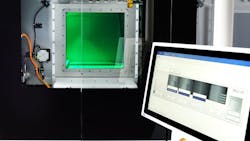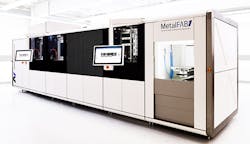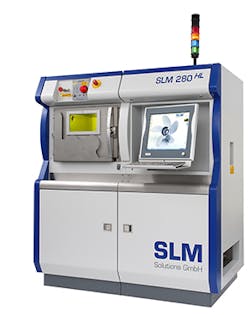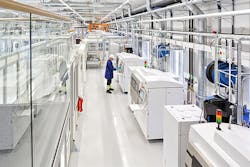One of the difficulties of following developments in 3D printing is that there are no dominating trends: R&D initiatives are launched, applications are tested, process technologies mature – and such things (along with other important advances) happen at a pace that is probably unsettling to anyone invested in the prospects of more established manufacturing technologies, for example, metalcasting. Recently PriceWaterhouse Coopers issued a white paper analyzing how 3DP is evolving as an industry and how this is impacting manufacturing. Among its conclusions: the technology’s many developers are doing “more making, less tinkering”; expectations are rising among established manufacturers (52%, versus 38% two years ago) that 3DP will factor into their high-volume production programs in the coming three to five years; and those same manufacturers’ concerns are growing that 3DP will “disrupt” supply chains and threaten intellectual property.
In the absence of simple trends, the manufacturers are right in their expectations and their concerns. For metalcasters in particular, the pace at which 3DP developments emerge as alternatives to foundry and diecasting processes (compared, for example, to the pace of technological change in their own industry) should be alarming.
Start with the manufacturing technology: Recently Additive Industries, a Dutch company, presented a new 3D printing package for metal parts, called MetalFAB1. It claimed this system “offers substantially improved performance over typical midrange systems,” promising significant increases in finished-part reproducibility, process productivity, and system flexibility. Currently, the MetalFAB1 system is in a Beta testing program involving Airbus, among other manufacturers. It reportedly offers one of the largest individual build envelopes (420x420x400 mm) available for 3D metal printing.
Additive Industry is preparing to start series production of the machines, and promises to deliver the first units before the year-end. The modular design of the MetalFAB1 system is meant to achieve customizable configurability for operators and/or applications. It has multiple build chambers with individual integrated powder handling, making it the first industrial 3D printer able to combine up to four materials simultaneously in a single machine. (Additive Industries has a patent-license agreement with EOS, another 3DP developer, granting access to certain technologies and alloys for metal printing.)
The MetalFAB1 can be equipped with a maximum of four full-field lasers, so there is no need for “stitching” together separately printed parts of large objects. Also, the developer claims it is the only system to include a furnace for integrated heat-treatment.
SLM Solutions, a German 3DP developer, will unveil its SLM 280HL metal additive manufacturing system in September, with a build envelope of 280x280x350mm. The SLM 280HL has a patented bi-directional re-coater: by laying fresh powder on the build plate in two directions, as opposed to coating in one direction and then returning to a “home” position, build times can be reduced by 30%. Multiple laser configurations (including twin 400-W or dual lasers of 400-W and 1000W) also accelerate building rates. The combination of larger build envelope, a faster recoating process, and dual laser technology have SLM Solutions claiming this to be the fastest machines in the class.
The threat to intellectual property is real, too: Siemens and HP Inc. revealed they are developing together a collection of technologies that would allow 3D printing of functional production parts from multiple materials. Such developments would help propel HP’s new Multi Jet Fusion™ technology and HP Jet Fusion 3D printers. This combination would mean that designers and engineers could initiate products outside the current physical or structural parameters of component design, and theoretically at increased speeds using 3D printing.
Of course, the disruption to metalcasters caused by 3DP would be felt by metalcasting suppliers too, and some developments would threaten the supplier but may boost metalcasters. 3DP sand molds and cores have arrived already, but the possibility for greater market penetration is growing. EnvisionTEC and Viridis3D formed a strategic partnership for sand mold and core production, with the latter company contributing its expertise on those processes and the former providing its experience in 3DP system design and development.
Their partnership will offer customers around the world access to an advanced 3D printing platform, they announced. "This will bring to the sand casting and investment casting industries a unique solution," said EnvisionTEC COO John Hartner. "Our partnership to unite innovative, industry-leading products and services to our expanding customer base will provide global solutions that save time and reduce cost, all while increasing output performance."
EnvisionTEC and Viridis3D choose to emphasize the opportunities to metalcasters, which is right. New technology is a threat to established business models only if the proprietors choose not to respond to the challenge. With developments in 3DP coming at such velocity, metalcasters and other manufacturers have no choice but to grab a good idea and hold on tight.
About the Author
Robert Brooks
Content Director
Robert Brooks has been a business-to-business reporter, writer, editor, and columnist for more than 20 years, specializing in the primary metal and basic manufacturing industries. His work has covered a wide range of topics, including process technology, resource development, material selection, product design, workforce development, and industrial market strategies, among others.




